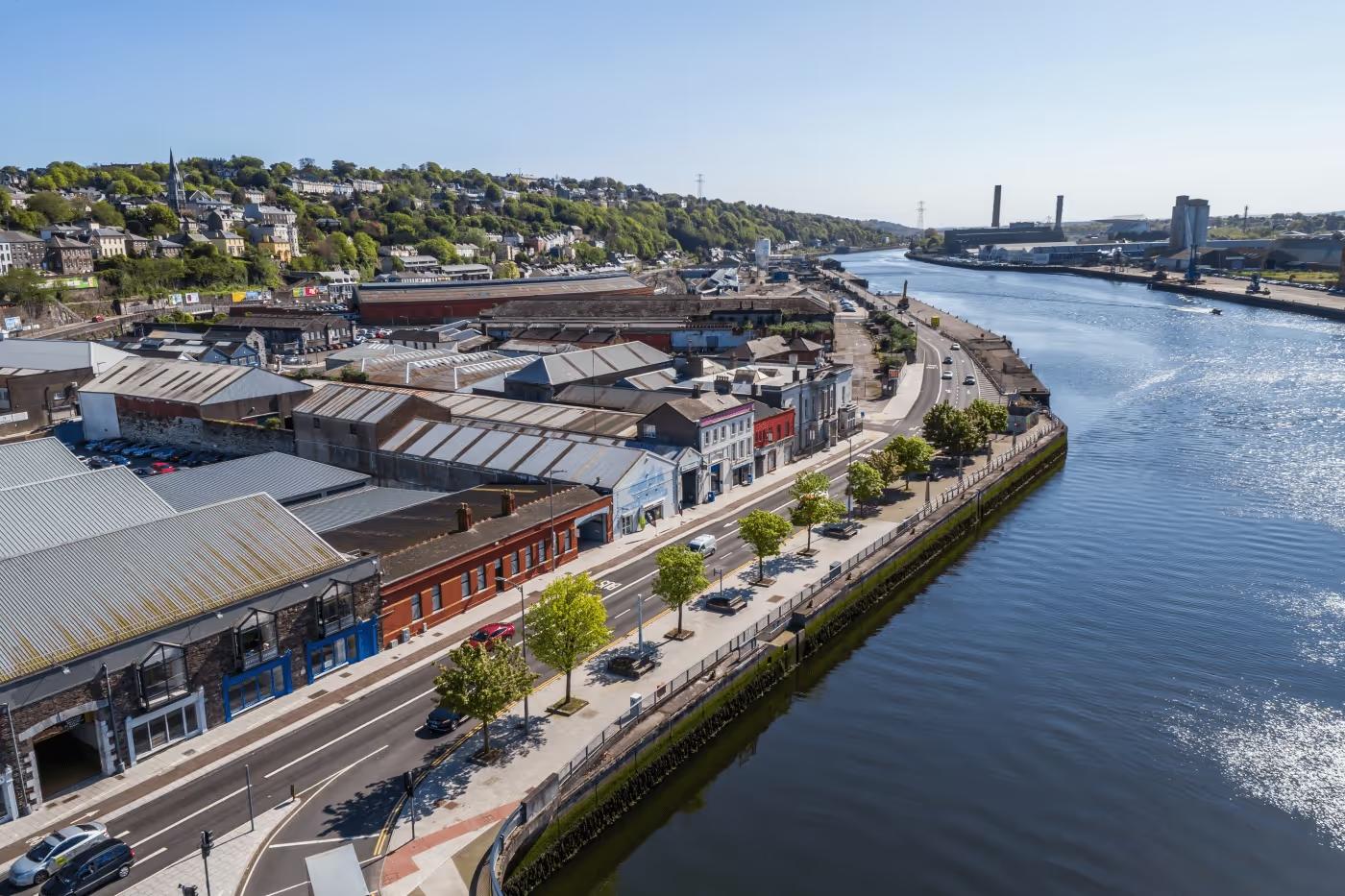



Blarney Business Park
Brief
Brief:
Blarney Business Park is a strategically located business and logistics hub near Cork, offering high-quality facilities tailored to the needs of modern enterprises. Spanning 170 acres, the park features flexible office spaces, industrial units, and warehouses, with cutting-edge infrastructure and sustainable design principles. Its proximity to key transport links and Cork city makes it an ideal location for a wide range of industries.
To convey these strengths effectively, our visualisation services aimed to:
- Emphasizing versatility of facilities by highlighting the adaptability of industrial and office spaces to cater to diverse business requirements, from logistics hubs to tech companies and manufacturing units.
- Promoting Expansion Opportunities by visualising potential future phases of development, including additional units and facilities, to showcase the park’s scalability and long-term value.
Service Deliverables:
- Verified View Montages (VVMs)
- Computer-Generated Imagery (CGIs)
- Animation
Use the slider to view before & after


Use the slider to view before & after


No items found.
Methodology
1. Verified View Montages (VVMs)
Steps:
1. Data Collection:
- Gather architectural plans, elevation drawings, and Revit models of the development. Establish viewpoint locations for onsite photography.
2. Onsite Photography:
- Capture high-resolution images of the development site using calibrated DSLR cameras.
- Employ GPS and survey equipment to record precise camera locations and lens details.
3. 3D Model:
- Create a detailed and accurate 3D model using the architectural plans and drawings
- Position the 3D model within the context of the photographic data.
- Ensure geometric accuracy through surveyed reference points and overlays.
4. Rendering and Composition:
- Render the 3D model with lighting and materials that match the site’s real-world conditions.
- Combine rendered views with the base photograph, ensuring seamless integration.
5. Verification and Presentation:
- Collaborate with planning consultants to verify the montage's accuracy.
- Annotate images into a collected booklet with camera positions and technical data for submission to planning authorities.

(Click image above to browse Gallery)
2. Computer-Generated Imagery (CGIs)
Steps:
1. Concept Understanding:
- Review architectural designs, mood boards, and material specifications.
- Conduct meetings with architects and developers to grasp the project's vision and select the desired viewpoints for exteriors and interiors.
2. 3D Modelling:
- Use 3D software such as Autodesk 3ds Max to create detailed models.
- Focus on accurately replicating dimensions, materials, and textures.
3. Material and Texture Mapping:
- Apply high-quality textures, materials, and finishes to surfaces.
4. Lighting Setup:
- Simulate natural and artificial lighting conditions using HDRI maps and light sources.
- Optimize lighting for the time of day that best represents the project’s mood.
5. Rendering:
- Use rendering engines like V-Ray, Corona, or Lumen to produce high-resolution images.
- Incorporate post-processing using Adobe Photoshop for colour grading and final adjustments.
6. Stakeholder Reviews:
- Present drafts for feedback and refine based on client requirements
- Final render and deliver as full high resolution CGIs
3. Animation
Steps:
1. Storyboard Development:
- Develop a narrative script that aligns with the project’s marketing and communication goals.
- Define camera paths and focus areas for the animation with the clients.
2. 3D Model Optimization:
- Prepare a version of the 3D model optimized for animation.
3. Camera and Scene Setup:
- Develop camera paths using cinematic techniques such as panning, dolly shots, and zooms.
- Set up key frames to control motion and focus dynamically.
4. Dynamic Elements:
- Integrate animated elements like moving people and vehicles
- Add environmental effects like wind-blown foliage or water ripples for realism.
5. Rendering:
- Render the animation sequence using GPU-accelerated engines like Unreal Engine or V-Ray.
6. Post-Production:
- Edit using software like Adobe After Effects
- Include voiceovers, sound effects and music to elevate the narrative.
7. Final Delivery:
- Deliver in multiple formats over Vimeo platform.






